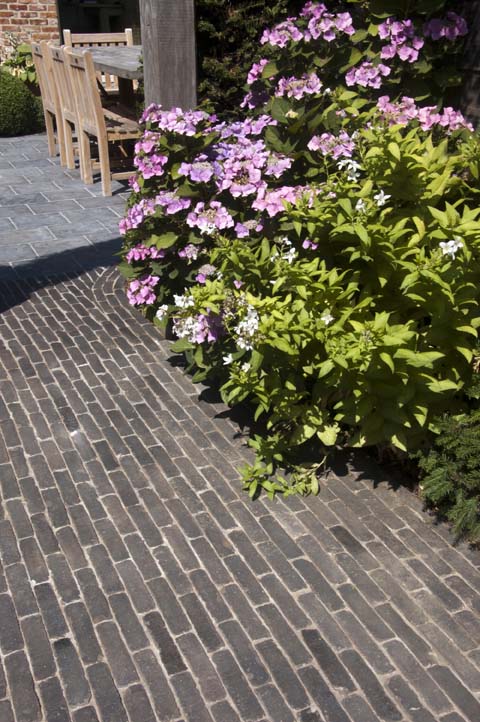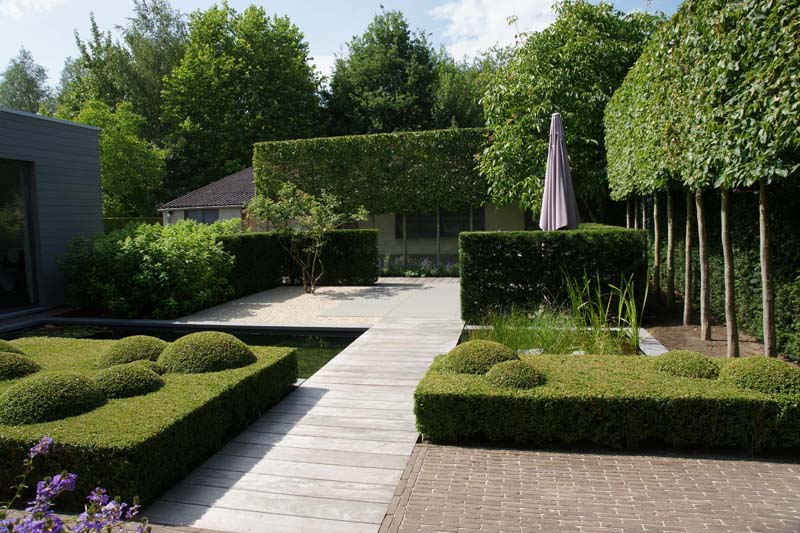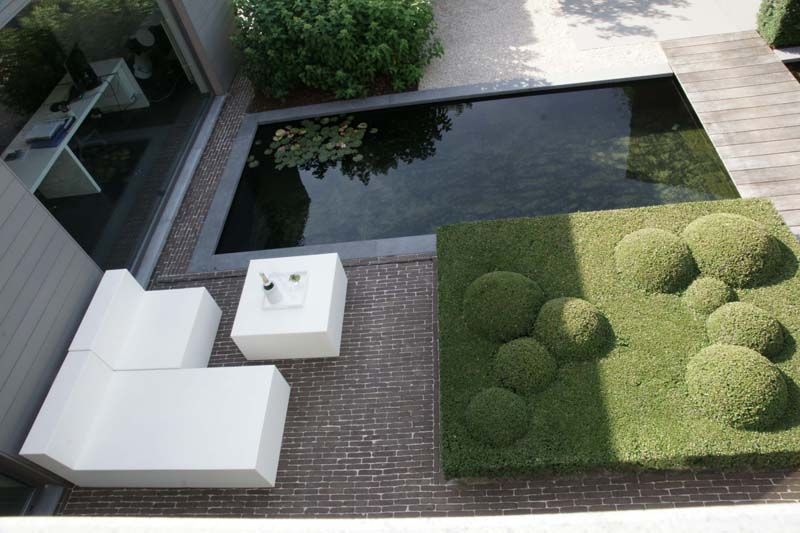A family business established in 1864, Belgian brickmaker Vande Moortel has a huge array of clay pavers for use in landscapes and gardens. Pavers that come in all manner of lengths, finishes and colours.
The wonder of kleiklinker, as they are known in Flemish, is that they work well in contemporary and historic garden design settings alike.
Belgians are among the keenest builders of modernist houses. With clear-headed space definition, they rest these discrete new structures within their settings / gardens by using clay pavers.
After all, kleiklinker are tried and tested. Think of the wealth of medieval towns and cities in the low countries with their expansive marketplaces connected by streets and alleyways. Cue a hard-wearing, flexible surface that unites the eclectic jumble of shops, merchant dwellings, workshops, town halls and the like.
Of course clay is a plentiful material used across Europe. In Italy ‘kleiklinker’ become mattoni di terra cotta as in the vast Piazza del Campo in Siena.
Today construction is underway on a garden I designed for a refurbished country house in Hampshire. With Crittall-style glazing, handmade deVOL cabinets and bare brick walls, the new kitchen is resolutely post-industrial in style. The floor will be in herringbone parquet. What better way to marry this new room with garden and main body of house than by laying a terrace of Vande Moortel clay pavers?
The pavers are being laid with a 45-degree herringbone pattern, and we even found tile formats to match the parquet pieces. The pavers are flexibly laid using fine sand, with a surrounding course set in mortar for belt-and-brace stability. In this case, we used Ancienne Belgique pavers in Copper Brown, handmade with discretely mixed coloration.
Even before the work’s complete, the terrace seems to have been part of the garden forever. Just wish I could think of a better adjective than ‘timeless’…
Update: To see more about the design and progress of this garden, click here.






